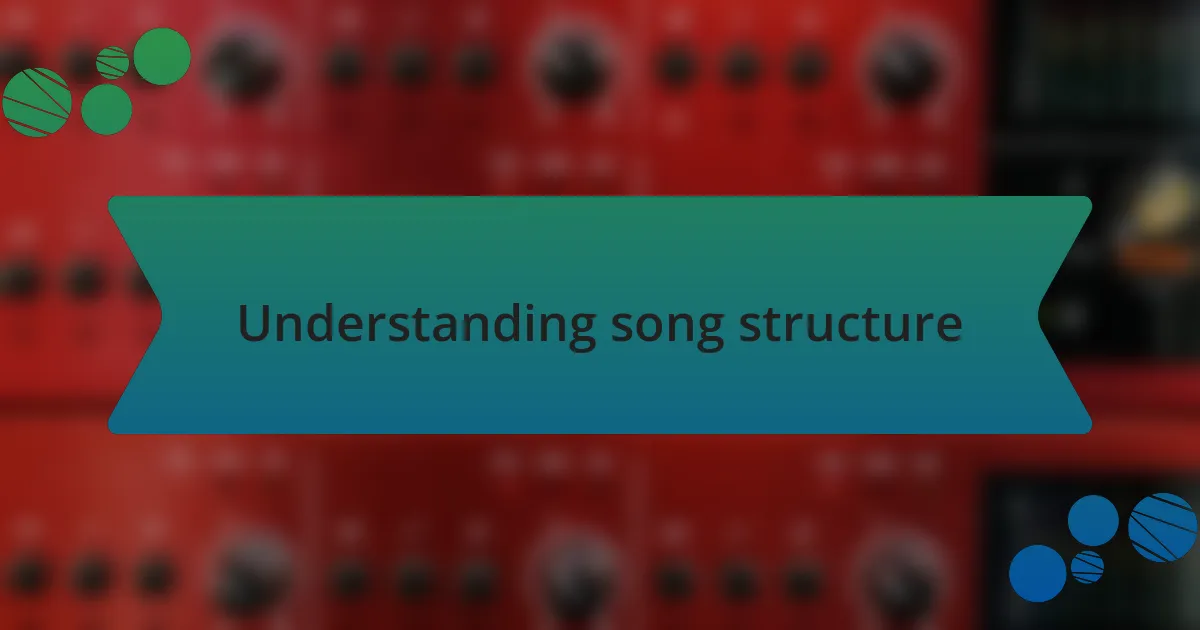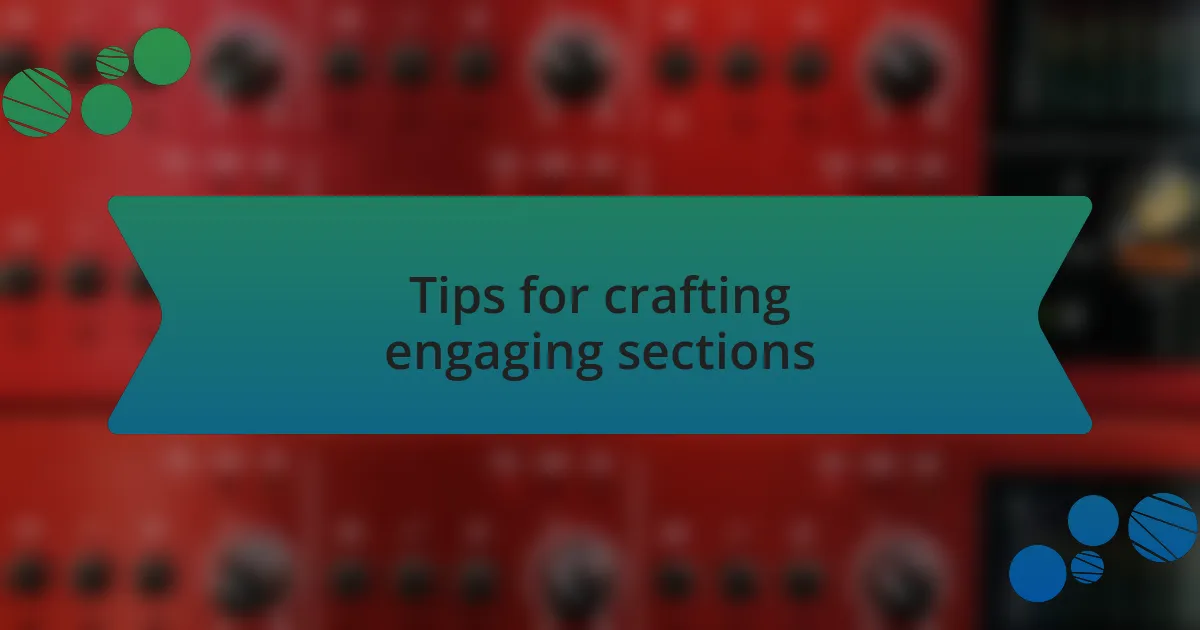Key takeaways:
- Understanding song structure is essential for emotional impact and listener connection in electronic music, with common formats like verse-chorus-verse and build-drop being effective.
- Successful tracks often rely on layering, vocal samples, and rhythmic variations to create depth and keep listeners engaged.
- Crafting engaging sections can involve building tension, creating contrasts, and incorporating storytelling to enhance the listener’s emotional journey.

Understanding song structure
Understanding song structure is crucial for creating impact and connection in electronic music. Personally, I remember the first time I mapped out a track – it felt like uncovering a secret map that showed how transitions could evoke emotions. Have you ever felt that rush when a drop hits just right? That’s the magic of carefully constructed segments like verses, choruses, and bridges.
In my experience, embracing the classic structures—like the AABA format—can be liberating. This familiar layout helped me craft tracks that resonated with listeners, almost like having a conversation rather than just throwing sounds together. Each section serves a purpose: the verse sets up a narrative, and the chorus brings that emotional peak we all crave.
There’s an art to the balance of predictability and surprise. Sometimes, I experiment by breaking conventional rules, layering unexpected elements that keep listeners engaged. When was the last time a song caught you off guard in a good way? Those moments are often the result of an intentional choice in song structure that pushes the boundaries while still connecting with the audience.

Common song structure formats
When it comes to common song structure formats in electronic music, I often find myself gravitating towards the verse-chorus-verse model. This format not only builds anticipation but also allows me to play with dynamics. I remember creating a track where the second verse brought a subtle shift, almost like revealing a new layer to a conversation. Have you ever noticed how a slight change can reignite your interest in a familiar song?
Another popular structure is the build-drop format, especially prevalent in genres like trance and dubstep. The idea is straightforward: you create a gradual build-up that leads to an exhilarating drop. I still recall the euphoria of designing a drop that felt like a rush of adrenaline. It’s exhilarating, isn’t it? That moment of anticipation and release can make or break a listening experience.
Exploring the A-B-A-B format can also be compelling. In my experience, this gives songs a unique tension and flow, as the listener is led through alternating sections. I once experimented with this structure during a live performance, which kept the audience guessing and engaged. Each switch in dynamics can evoke distinct emotions, leading to a richer auditory experience. Don’t you love when tracks keep surprising you with their journey?

Analyzing successful electronic tracks
Many successful electronic tracks capture attention through careful layering and development. I find that analyzing a piece often reveals the intricacies behind those thrilling crescendos. For instance, I once dissected a track that seemed simple at first, but the genius lay in its evolving bassline. It transformed subtly throughout the song, drawing listeners deeper into its rhythm—have you ever caught yourself lost in a track because of its evolving sound?
The use of vocal samples often stands out in electronic music. I love how a well-placed vocal snippet can turn a track from good to unforgettable. I remember incorporating a haunting vocal in my own production—a sample that echoed emotions of longing. The way it intertwined with the instrumentation added a layer of depth that resonated with listeners. Don’t you think genuine emotion can elevate a song from just a beat to a memorable experience?
Rhythmic variations also play a critical role in the success of numerous electronic tracks. During one project, I experimented with syncopation, which shifted the groove in a way that felt almost liberating. The unexpected rhythmic breaks invited a sense of unpredictability, keeping the audience on their toes. How do you feel when a track throws in a twist that challenges you to move differently on the dance floor?

Tips for crafting engaging sections
When crafting engaging sections in your track, think about the emotional journey you want your listeners to take. I remember when I structured a section by gradually building tension through a relentless synth progression—every note seemed to tease what was coming next. Have you ever felt that irresistible pull when a song anticipates a huge drop? That anticipation can keep listeners glued to their seats.
Another tip is to consider how contrast can amplify the impact of each section. During a recent project, I played with the dynamics by transitioning from an intense, full-bodied chorus to a stripped-down bridge. The drop to minimalism created a striking contrast that not only caught the audience off guard but also heightened the thrill when the full energy returned. Isn’t it fascinating how a shift in sound can reshape the entire mood of a track?
Lastly, structure your sections to facilitate storytelling within your music. I’ve found that weaving a narrative through various themes—like hope contrasted with despair—can resonate powerfully with listeners. For instance, in one track, the introduction hinted at conflict while later sections unveiled resolution, creating a sense of closure. Don’t you agree that a story enhances the experience, making the music feel more personal and relatable?